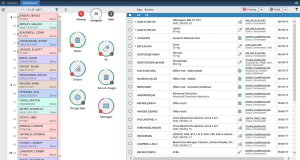EMR software goes beyond record-keeping. It enhances the diagnostic process and enables healthcare providers to make accurate, timely, and informed decisions. In this blog, we will explore how Electronic Medical Record (EMR) software enhances diagnostics.
The Evolution of Diagnostics
Diagnostic medicine has seen remarkable progress over the years, thanks to technological advancements, research, and healthcare practices. However, the traditional diagnostic process was often marred by inefficiencies, delayed test results, and the risk of human error. EMR software has addressed many of these challenges and ushered in a new era of data-driven diagnostics.
EMR Software: A Diagnostic Powerhouse
Instant Access to Patient Data
One of the most significant advantages of EMR software is the ability to instantly access a patient’s complete medical history. Healthcare providers no longer need to sift through paper records or wait for test results to arrive by mail. This rapid access to historical data allows for more informed diagnostic decisions.
Comprehensive Patient Profiles
EMR software compiles a comprehensive profile for each patient. This profile includes demographic information, medical history, medications, allergies, etc. A well-rounded patient profile is essential for a more accurate diagnosis.
Streamlined Test Ordering and Results Retrieval
EMR software simplifies the process of ordering diagnostic tests and retrieving results. Healthcare providers can request tests electronically, and they are accessible through the system. This minimizes the chances of lost or delayed test results.
Decision Support Tools
Many EMR systems incorporate decision-support tools that provide evidence-based guidelines and recommendations for diagnosis and treatment. These tools help healthcare providers make more informed decisions, reducing diagnostic errors.
Data Analytics and Pattern Recognition
EMR software can analyze vast amounts of patient data to identify patterns and trends that may not be immediately apparent to healthcare providers. This data analysis can aid in early diagnosis, risk assessment, and treatment planning.
Integration with Diagnostic Devices
EMR software can integrate with various diagnostic devices. These integrations allow for real-time data capture and interpretation, facilitating more rapid diagnostics.
Remote Consultations
Telemedicine capabilities within EMR software enable remote consultations with specialists and experts. This means that even in remote or underserved areas, patients can access the expertise needed for complex diagnoses.
Accurate medication management is essential in diagnostics. EMR software provides healthcare providers with the ability to review a patient’s current medications and identify potential drug interactions that may affect the diagnostic process.

Enhanced Diagnostics Through EMR Software
Real-World Impact of EMR Software on Diagnostics
The impact of EMR software on diagnostics is evident in real-world success stories. Several healthcare organizations and institutions have experienced significant improvements in diagnostic accuracy and efficiency:
Cleveland Clinic
The Cleveland Clinic implemented an advanced EMR system that includes decision support tools for cardiac diagnostics. This has led to improved diagnostic accuracy for heart-related conditions and better treatment planning.
Mayo Clinic
The Mayo Clinic, a renowned healthcare institution, has leveraged EMR software to enhance diagnostic capabilities in cancer care. The system’s integration with diagnostic imaging devices has streamlined the process of identifying and staging cancers.
Kaiser Permanente
Kaiser Permanente, one of the largest healthcare providers in the United States, has successfully used EMR software to improve diagnostic accuracy for chronic conditions. This has led to better management of conditions such as diabetes and hypertension.
Challenges and Considerations
While EMR software has revolutionized diagnostics, it is essential to address challenges and considerations:
The accuracy of data entered into the EMR system is critical. Errors or inconsistencies in patient records can lead to misdiagnosis or treatment errors.
Interoperability
Interoperability, or the ability of different systems to communicate and share data, remains a challenge in healthcare. EMR systems must be able to exchange information with diagnostic devices and other software to provide a comprehensive picture of a patient’s health.
Protecting patient data is a top priority. EMR systems must adhere to stringent data security standards, such as those outlined in the Health Insurance Portability and Accountability Act (HIPAA).
User Training and Usability
Healthcare professionals must receive adequate training to effectively use EMR systems. User-friendly interfaces and efficient workflows are essential to encourage widespread adoption and optimal use.
Encouraging patients to participate in their diagnostic process actively is vital. EMR systems can be used to educate patients, provide reminders, and facilitate communication between healthcare providers and patients.








